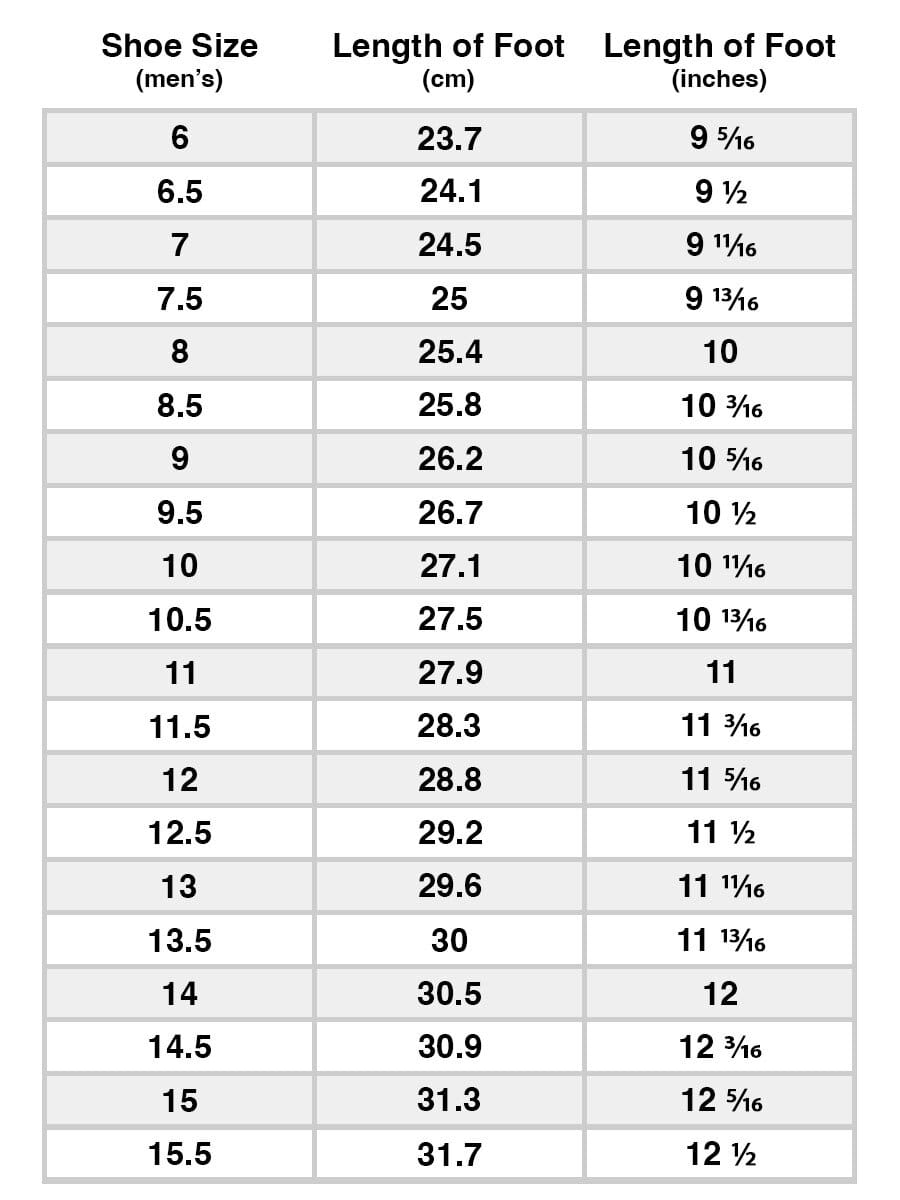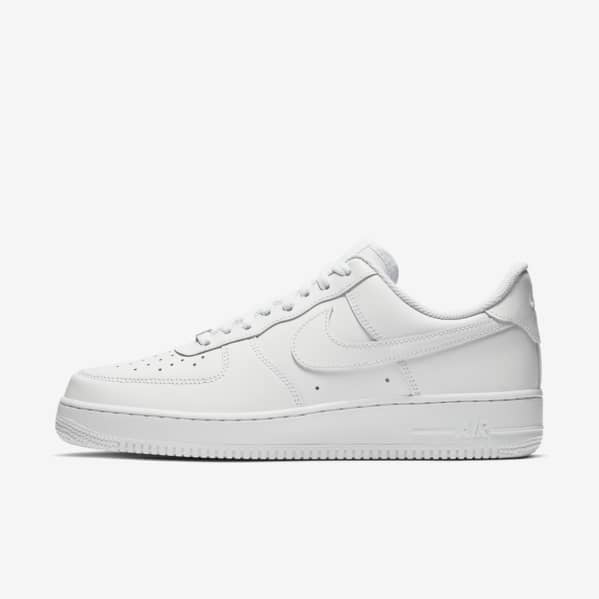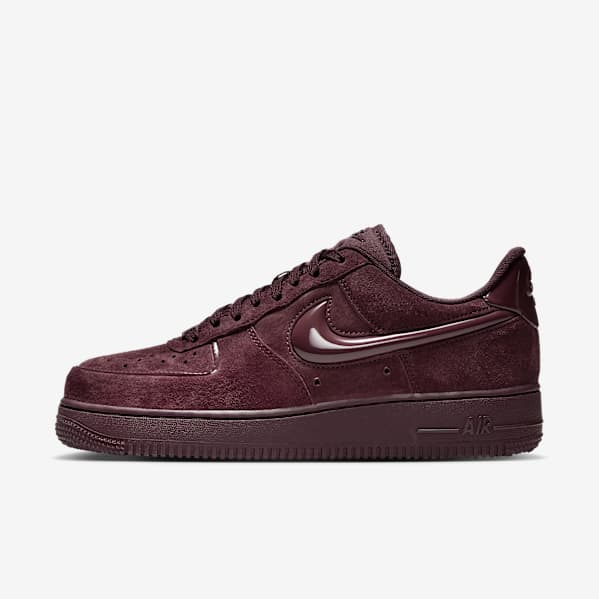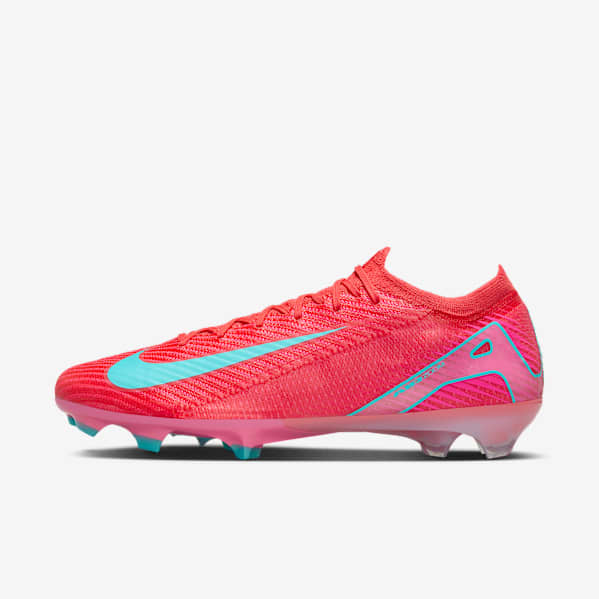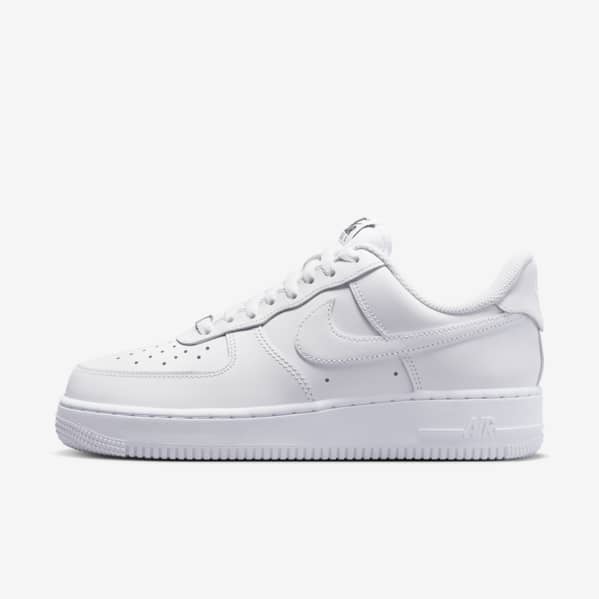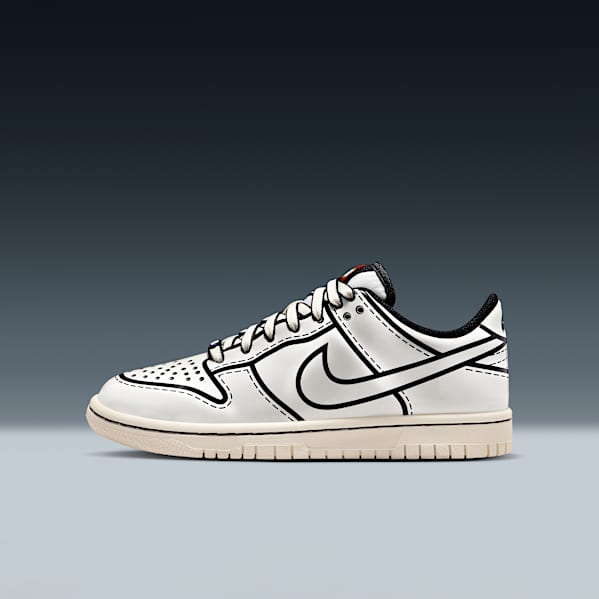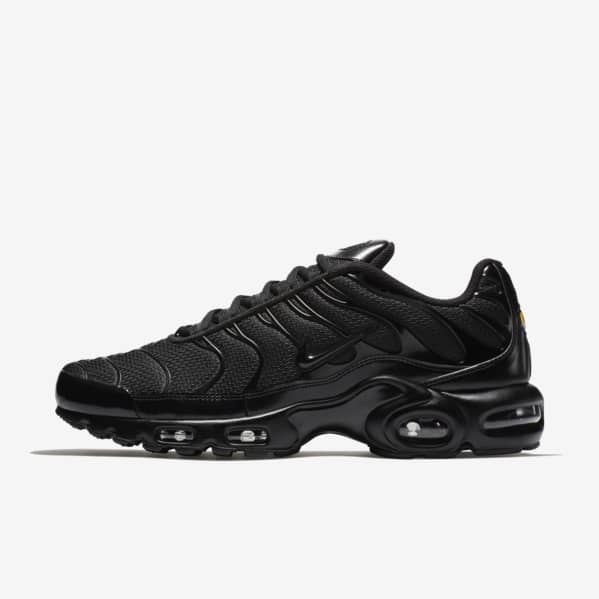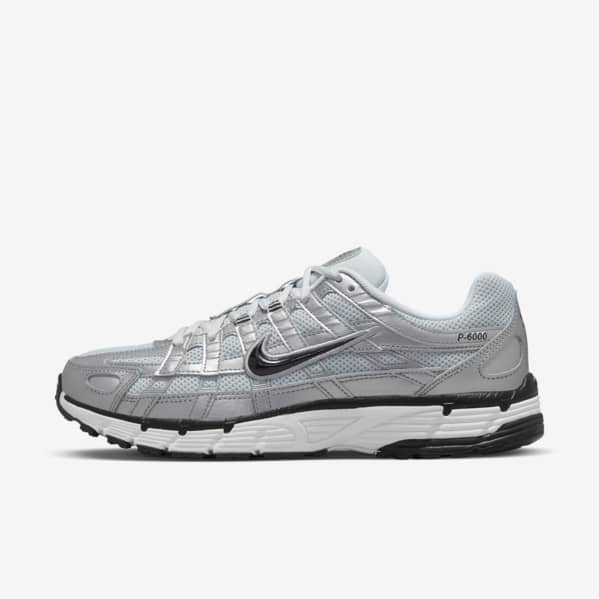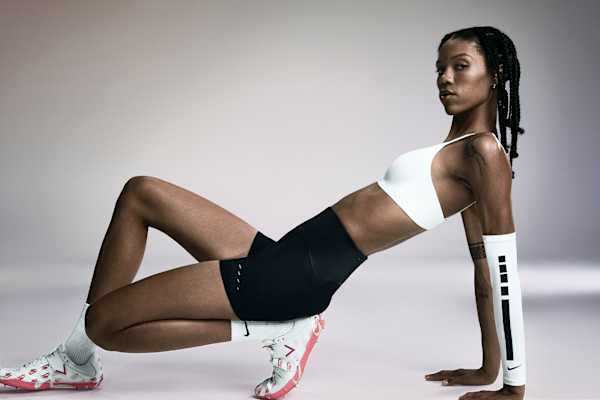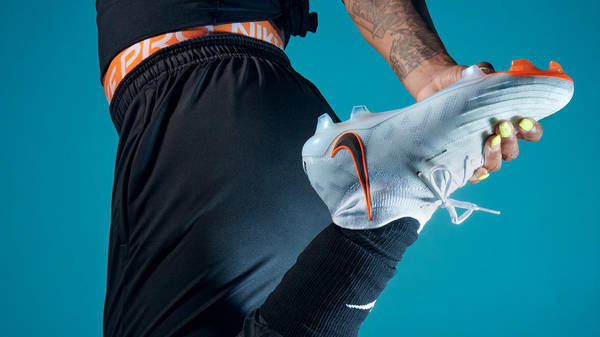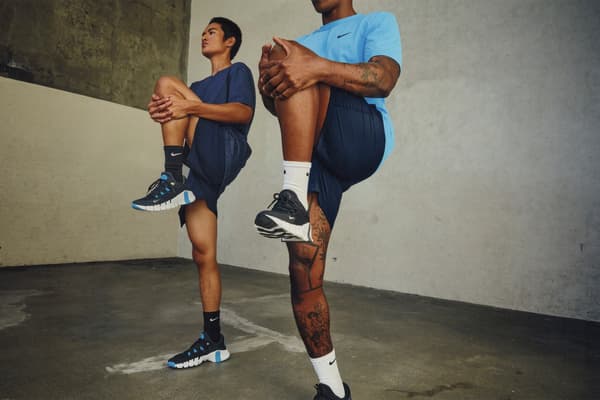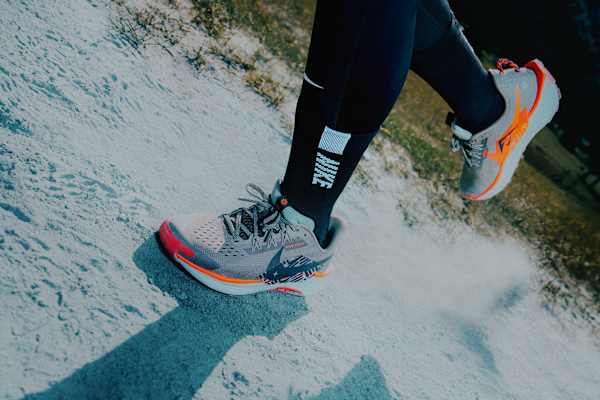How to Measure Your Foot to Find the Right Shoe Size
Buying Guide
Follow these simple instructions to measure your feet—then check out Nike size guides to determine which shoe size is best for you.

Whether you're looking for high-performance athletic footwear or casual, everyday kicks, it's important to wear well-fitting shoes that comfortably support your feet. Shoes that don't fit properly can leave your feet feeling uncomfortable, achy or blistered. And unfortunately, wearing the wrong size shoe is more common than you might think.
A 2018 study from the Journal of Foot and Ankle Research found that up to two-thirds of people may be wearing shoes that fit improperly, and that wearing the wrong size is associated with foot pain and poorer foot health overall.
So, how do you know if you're wearing the right shoe size? Finding the correct shoe size starts with accurately measuring your feet. Read on to learn how to measure your foot size and how to find your shoe size in Nike footwear. Plus, check out additional tips for picking out comfortable, supportive shoes that meet your needs.
(Related: 8 Ideas for Storing Shoes)
How to Measure Foot Size
- For the most accurate measurement, it's best to measure your feet at the end of the day. Feet tend to swell throughout the day and may have a slightly larger measurement in the evening than in the morning.
- Before measuring, put on the same pair of socks you plan to wear with the shoes.
- Tape a piece of paper to a hard floor, ensuring the paper doesn't slip.
- Stand with one foot on the paper and a slight bend in your knees. You can also sit in a chair, but make sure your feet are firmly planted on the ground.
- With a pen or pencil pointed straight down, trace the outline of your foot on the paper. If possible, ask another person to help you with this step. That way, you can keep your feet still and capture the most accurate measurement.
- Repeat the process with the other foot. It's common for a person's feet to be two slightly different sizes.
- Mark the tip of the big toe and the outermost part of the heel, and use a ruler or tape measure to measure the distance between the two points. This measurement represents the length of your feet (for the most precise measurement, consider using a ruler with centimetres, rather than inches).
Note: Nike shoe sizes are based on foot length. If you find that a standard-size shoe feels too narrow on your foot, you may want to explore wide or extra-wide styles. There are several Nike shoe icons that are made in wide and extra-wide fits, including the Nike Pegasus and the Nike Monarch.
- If your feet are two different sizes, use the foot measurements of the larger foot when comparing your measurements against a size chart.
How to Find Your Shoe Size
Now that you've measured your foot size, compare the measurements against a Nike size chart to find the best shoe size for you.
While other shoe brands may use similar size scales, it's best to check out a shoe brand's size charts before purchasing a new pair of shoes from them, as each brand's exact approach to size and fit may vary.
Men's Shoes
Women's Shoes
Men's Shoes
Women's Shoes
These charts reflect US footwear sizes. For conversions in other markets, check out the Nike size charts below.
What's the Difference Between Men's and Women's Shoe Size?
Generally speaking, there is a 1.5 size difference between men's and women's shoes at Nike. For example, if you're a size 8 in women's shoes, you're probably a size 6.5 in men's shoes. Some footwear styles are offered in unisex sizing, however, so be sure to double-check the product details before purchasing a new pair.
4 Signs You May Be Wearing the Wrong Shoe Size
When a shoe fits correctly, you should be able to perform your desired movement—be it walking, running or playing a sport—with comfort and confidence in your feet. That said, there are a handful of telltale signs to look out for if you suspect you're wearing wrong shoe size, including:
- The toe box is too tight. If a shoe is too small, you might experience pinching or irritation on the edge of your big toe or pinky toe.
- Your heels or ankles feel irritated. If a shoe collar is too high, for example, you might experience redness or blisters on your ankle bone (indicating a too-large fit).
- The shoe's arch is in the wrong place. If the shoe is too big, the arch might land too close to your heel. In a shoe too small, it might land too close to the ball of your foot.
- Your heel slips out while walking. In a shoe that is too big, this might happen even when the laces are tied tight.
Tip: When trying on a pair of Nike shoes to assess the fit, be sure to mimic whatever movement you intend to perform in them. For example, if you're shopping for running shoes, consider testing how they feel by taking a quick jog around the block while wearing them. If you'd like expert tips and advice from a Nike teammate, head to your local Nike store to try on different styles in person.
3 Tips to Help Kids Find the Right Shoe Size
When finding new shoes for a child, or understanding when it's time to discard a previous pair, caregivers may need to do some detective work, as children aren't always able to articulate certain nuances related to fit.
(Related: The Best Nike Shoes for Back to School)
Try these tips to ensure a child's footwear is the proper size:
- Ask the child to stand in the shoes, then feel for the tip of their toe in relation to the tip of the shoe. There should be enough room for you to place the tip of your finger in that space. If there's not enough room, the shoe is probably too small.
- Observe how the child runs or walks in their shoes. Children tend to have less consistent gait patterns than adults. However, if they seem to be moving in a slightly less steady manner, they may be uncomfortable in their shoes.
- For very young children (like toddlers), if they are constantly fidgeting with their footwear or attempting to take them on and off frequently, they may be wearing the wrong size.
4 Factors That Can Affect the Way a Shoe Fits
Using the measurement tools in this guide is a great way to determine the right shoe size, but it's important to note that different shoes have different designs and purposes, which may impact the way two different shoes feel on your feet, even if they are the same size.
There are a handful of factors that can affect the way a shoe feels on your feet:
- The shoe's last and overall structure. A last is the footform that a shoe is built on, and different shoes (including different Nike shoes) are made with different lasts. For example, a Mercurial football boot is made with a different last than a pair of Air Force 1s. While Nike football boots are designed to fit true to size, they serve a different purpose than a lifestyle shoe, for example, so they will probably feel different to an Air Force 1 on foot. Many footballers, especially elite-level athletes, choose to size down in their football boots so they can feel a more sensitive touch on the ball
(Related: How Should Football Boots Fit?)
- Material. Some fabrics will have more stretch and softness than others. For example, leather might feel softer and more pliable than certain synthetic materials.
- The closure system. A shoe with laces may allow you to loosen or tighten the fit for a more personalised feel, while a slip-on shoe will have less adjustability.
- The intended purpose of the shoe. For athletic performance, you may want a football, American football or baseball boot to provide a snug, tight fit. Meanwhile, you may want a slightly roomier fit, with more wiggle room in the toe box, for an everyday shoe.
Measurements aside, shoe fit is subjective. It's normal for preferences to vary from person to person. You may prefer extra roominess or tightness in your footwear, depending on how you like the shoe to feel. Your best bet: use your foot measurements as a guide, but be sure to try on several pairs to find what feels most comfortable on your feet.
Frequently Asked Questions
How do you know if you're wearing the wrong shoe size?
If you're experiencing pinching in the toes or have very little wiggle room in the toe box, you're probably wearing shoes that are too small. If the shoe collar height is too high or there's rubbing or other irritation around the ankle, you may be wearing a size that's too big. Your heel may also slip and move around in a shoe that's too large, or you may feel the arch support is off-centre underfoot.
How do you know if a kid is wearing the wrong shoe size?
A child might be wearing the wrong shoe size if they are constantly fidgeting with their footwear, expressing discomfort or showing unusual gait patterns. Also, if there isn't enough space for you to put your fingertip between the tip of their big toe and the tip of the shoe, the shoe is probably too small.
How do you convert men's to women's shoe size?
Generally speaking, there is a 1.5 size difference between men's and women's shoes at Nike. For example, if you're a size 8 in women's shoes, you're probably a size 6.5 in men's shoes. Some footwear styles are offered in unisex sizing, however, so be sure to double-check the product details before purchasing a new pair.
What are the best Nike shoes for wide feet?
If you find that a standard-size shoe feels too narrow on the foot, you may want to explore wide or extra-wide styles. There are several Nike shoe icons that are made in wide and extra-wide fits, including the Nike Pegasus and the Nike Monarch.
How do you convert US shoe size to European shoe size?
How do you convert US shoe size to Canadian shoe size?
Canada uses the same footwear sizing system as the US, so there is no need to convert US shoe size to Canadian shoe size.
Words by Julia Sullivan
